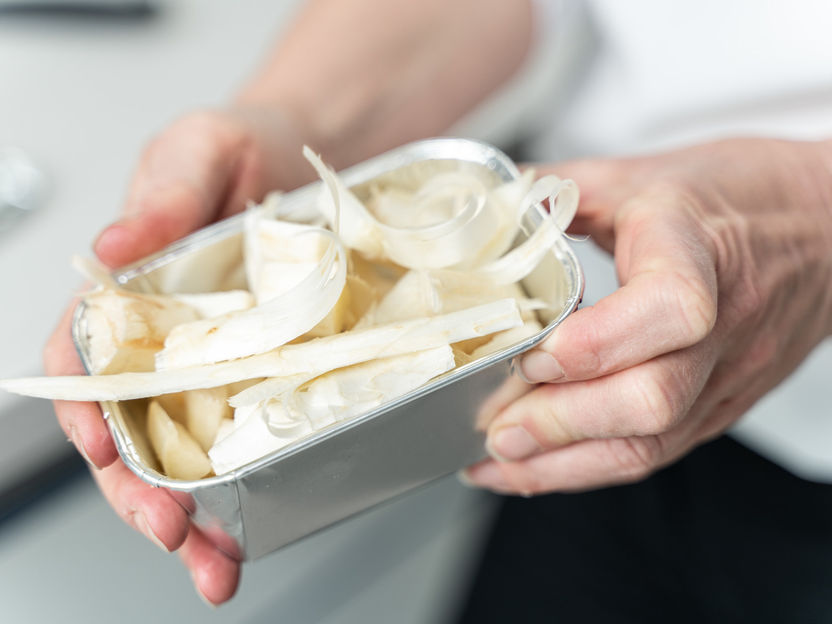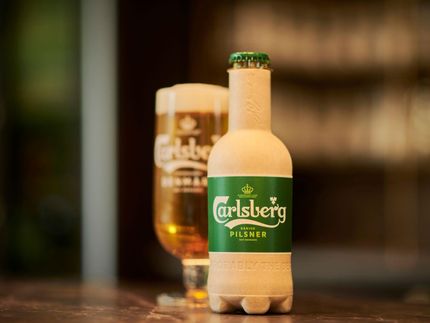Packaging material made from asparagus fibres
From asparagus scraps to strawberry baskets
Advertisement
asparagus is a popular seasonal vegetable in Germany: in a global comparison of asparagus production, Germany ranked fourth in 2019 with around 130,000 tonnes. However, half of this becomes animal feed or ends up as a waste product in the organic waste bin, such as peelings, end pieces or "crooked stalks". Therefore, the HM research project of Prof. Dr. Helga Zollner-Croll (course of studies Packaging Technology and process engineering Paper) looked for possibilities to use asparagus waste for paper and packaging production in a sustainable way.

The basis for the paper production are asparagus peels, end pieces and whole stalks.
Johanna Weber
Trials for sustainable use
The project, which was funded by "Bayern Innovativ", first investigated the extent to which asparagus waste is suitable for the production of fibres for packaging material. To this end, Zollner-Croll's team shredded asparagus peels, end pieces and whole stalks of the asparagus varieties Grolim, Gijnlim and Fortems using a pulp mill. This pulps the asparagus fibers so they can be studied in the lab. The research team first examined the fibre suspensions for their dewatering properties and water retention capacity, which are important for paper production.
From asparagus scraps to strawberry baskets
The team then processed the asparagus fibres together with cellulose fibres in various mixtures to produce laboratory sheets for paper testing. According to the results, the asparagus fibres are suitable for the production of paper because they have similar strengths to so-called sulphite short fibres. In the paper, the individual asparagus fibers are clearly recognizable, and the light beige coloring reflects the naturalness of the paper.
"We were able to obtain fiber material from the asparagus. With the help of a laboratory fibre casting process, we produced berry husks. The rough surface is well suited for berry packaging, for example for strawberries. It might even be possible to do without fleeces or absorbent inserts," Zollner-Croll says of the results. Her goal is to make the best possible use of the asparagus fibers until their full potential is exhausted in terms of sustainability.
Note: This article has been translated using a computer system without human intervention. LUMITOS offers these automatic translations to present a wider range of current news. Since this article has been translated with automatic translation, it is possible that it contains errors in vocabulary, syntax or grammar. The original article in German can be found here.





















































